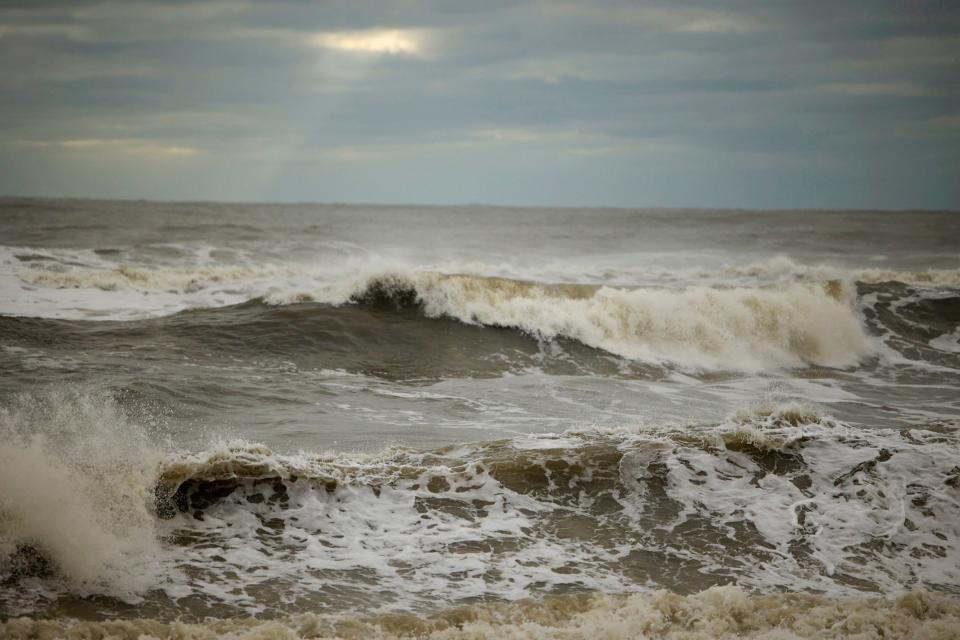Extreme weather can elicit wide range of emotions | SUSAN PARKER
Another birthday, another hurricane. Or is it another hurricane, another birthday? This year on my birthday, Sept. 28, here in Northeast Florida we were feeling the first impacts of Hurricane Ian. Meanwhile the storm brutalized Southwest Florida.
As a child I had several birthday parties postponed because hurricanes were heading our way. It's a seasonal thing.

But this column is not really about my often-vague recollections of the storms, but a way to look back at aspects of our town and our society years ago. Changes and improvements in communications and information about approaching storms has molded our preparations. We also have different expectations of what the post-hurricane days might bring.
My father used to tell the story about bringing me as a new baby and my mother home a few days after Sept. 28. We lived on Vilano Beach. A fall storm, maybe a northeaster, was beating up St. Augustine. At that time the causeway across the marsh from May Street to the Vilano Beach bridge was at a lower elevation than today. You can still see the remnant roadway at the end of May Street.
The marsh was inundated by seawater from the storm and the causeway was covered as well. Daddy said he could hardly see the road under the water to drive on and felt as if he had "launched" his truck.
My first memories of a hurricane are small mental snapshots as perceived by my 4-year old mind. Some of the "memories" I'm sure were shaped by my parent's reminiscences as they retold them over and over. By then we were living on the west side of Comares Avenue, just south of today's Conch House. At that time Comares Avenue in a sense WAS oceanfront. Conch Island had not yet formed. We could see the ocean from our house. At low tide sea gulls and other sea birds crowded the sand bars known as Crazy Banks, but the sand bars were covered. There were no oyster beds or marsh grasses, as there are today. We could swim there and walk on beach sand.
Perhaps the strongest memory of that storm was the sound of breaking glass and mother crying out. The east window in her bedroom had blown in. Water poured in through the window opening. Shards of glass had shot across the room into the crib where my 7-month old brother lay. My mother tried to block the water with sheets and towels. She really had nothing else.
Then, from across the street came the neighbor in his their late teens and his friend — truly heroes. They found boards, rather like 2X4s, to nail across the opening and at least block much of the water. My mother put a small metal trash can in the middle of the bedroom to hold the wet towels and sheets. The wet trash can left a round black stain on the bare wood floor. For years, the stain was covered by carpet, a forgotten artifact of a long-ago storm. When I sold my parents' house, the black stain caused by a hurricane more than 50 years before was still there.
Where was my father? He and our next door neighbor were both walking to their homes on Comares Avenue from San Marco Avenue. They feared that their automobiles would be stalled out by the water in St. Augustine's Streets. Once they headed out, no one could know where the walkers were or how they were until they came in the door of their homes. But the adults waiting for them knew that they had to walk across the Bridge of Lions. This episode reminds me of how often we could not know what was happening to others important to us because the communications had not developed to do so.
Of course, we lost electricity. I have the quite strong, but small, memory of my excitement of sitting with my parents with a kerosene lamp in the middle of the table. The lamp was the source of my excitement. I can still almost see the curves of the hurricane shade.
Search your own memories, however vague. Storms are emotion-filled events, whether snowstorms or hurricanes, and create strong recollections. Take a historical approach. Think about how your events associated with storms were shaped by the communications and other technology of the time.

Susan R. Parker holds a doctorate in colonial history.
This article originally appeared on St. Augustine Record: Susan Parker: Hurricane Ian brings back many memories of past storms

